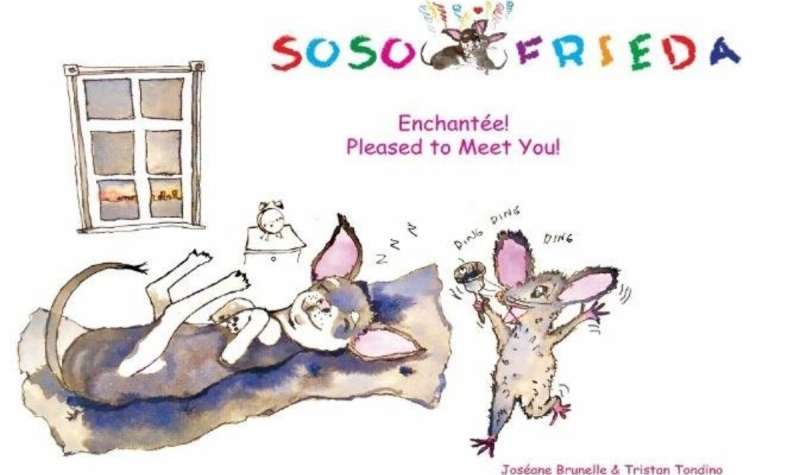Cover of the bilingual children’s book “Enchantée! / Pleased to meet you!” (Brunelle & Tondino, 2017), used in the research. Credit: University of Ottawa
Do children learning French as a second language see benefits from reading bilingual French-English children's books?
A study recently published in the journal Language and Literacy found that bilingual books, which are not often used in French immersion classrooms, are seen by students as an effective tool for second language learning.
To find out more on this topic, we spoke with the co-author of the paper, Joël Thibeault, Assistant Professor of French education at uOttawa's Faculty of Education.
What is the topic of your research?
My research focuses on the educational value of bilingual children's books in the teaching of French as a second language. To highlight this value, I zeroed in on elementary students in French immersion and asked them whether they perceived the utility and inutility of this medium. In other words, I asked them how the interaction of French and English within the same book could help them learn how to read.
What was your research method?
Ian A. Matheson, Professor at Queen's University and co-author on this paper, and I wanted the students taking part in the study to have the opportunity to interact with and be exposed to bilingual books before sharing their perceptions. This is why we asked them to read aloud passages from two different bilingual books before we interviewed them.
In the first one, the same text appears in French and English. In the second one, passages in French are not identical to those in English. This meant the reader had to have some knowledge of both languages to completely understand the book's content.
After each read-aloud session, we conducted one-on-one interviews that allowed us to describe how our participants perceived the utility of each book.
Data collection took place in the spring of 2019. We interviewed French immersion students in Grades 3 and 4, in Saskatchewan, which is an interesting setting because it is Anglo-dominant. This means that school is often the only space where students are exposed to French.
What are your study's main conclusions?
Our participants were able to identify more advantages than disadvantages when it comes to reading bilingual books. They notably pointed out that bilingual books could help them learn French vocabulary.
Some students also noted that having French in the book could help them develop knowledge related to English vocabulary.
Moreover, the students were able to suggest ways to integrate this bilingual literature in immersion classes. For example, some mentioned that it could be used for collaborative reading tasks, when two students have different proficiency levels in French and English. They felt this process could enable a co-construction of meaning where everyone could make use of their knowledge of the languages interacting in the book.
Could your results help change teaching practices?
Yes, because in immersion, we often opt for monolingual teaching practices; French is the only language allowed. However, we increasingly acknowledge that second language learning relies on the languages that students already know. With that in mind, it could be quite useful to get learners to use their full linguistic repertoire when they learn a second language.
This study is coherent with this perspective as it explores the positive perceptions that students have regarding bilingual children's books. Thus, it helps to highlight the utility of this novel teaching tool and recognizes the value of the diversified linguistic repertoire that students in immersion have.
Is there anything else you'd like to share?
One might think that when reading a bilingual book, students would tend to only read the passages in the language they know best. However, our data does not support this idea. While they were reading, students equally focused on French and English. One-on-one interviews also confirmed students fully recognize the advantages related to having two languages in interaction within the same book.
Of course, it is possible that participants did not want to admit to the researcher that they would only focus on the language they know best if they had read the book by themselves—this is what we call in research 'social desirability.' However, for now, there is nothing in our study, as well as in those carried out by other researchers before us, that would allow us to state that young bilingual readers would tend to mainly read the passages in the language they know best.
It would be interesting to conduct further research in different reading environments (in class, at the library, at home, etc.). This could add to the work we have begun by documenting with greater precision how students engage with bilingual books.
More information: Joël Thibeault et al, How do Elementary Students Perceive the Utility of Dual-Language Children's Books? An Exploratory Study in French Immersion, Language and Literacy (2021). DOI: 10.20360/langandlit29518
Provided by University of Ottawa





















